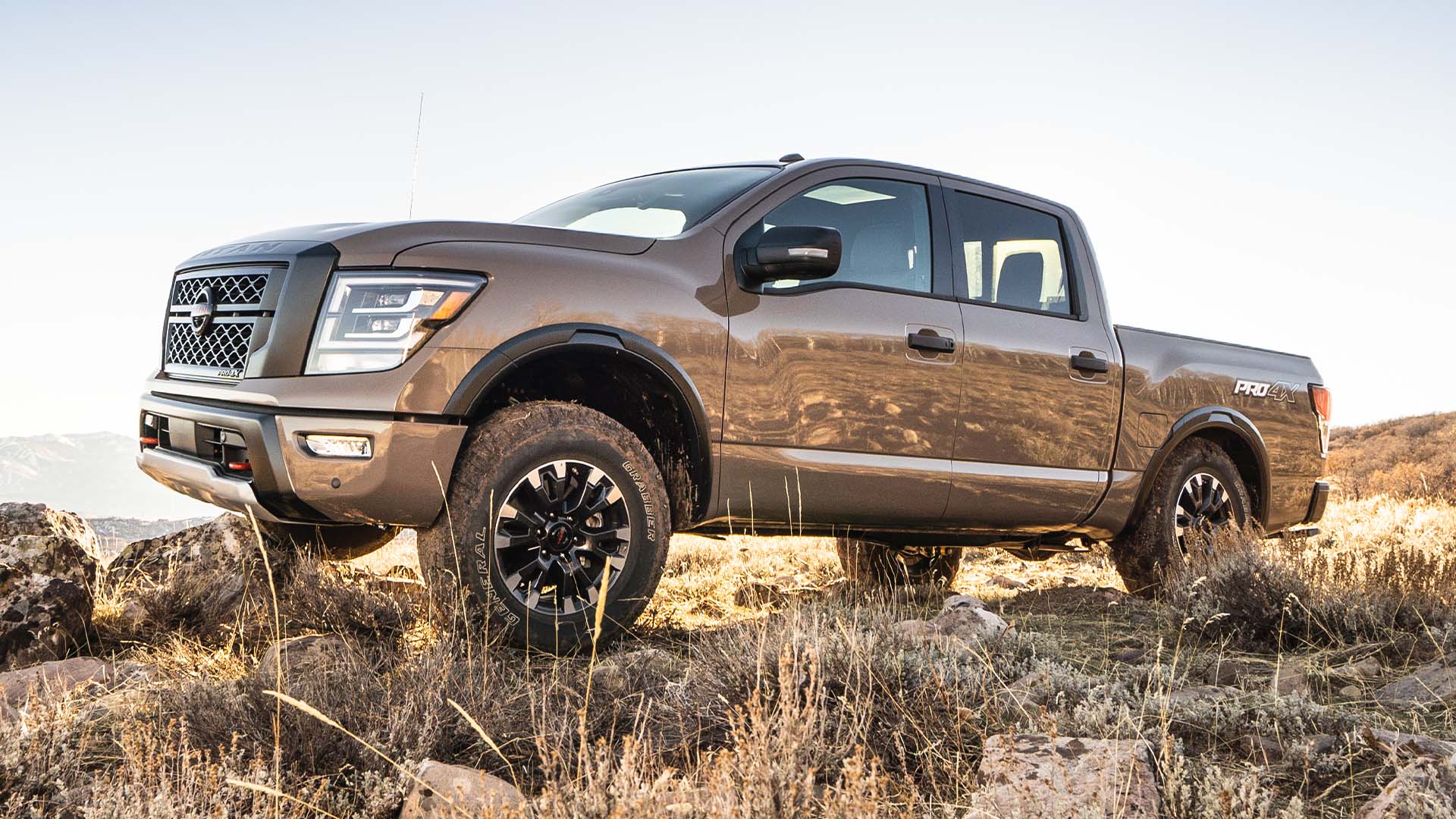

You might’ve seen reports earlier this week saying the Nissan Titan won’t live past 2025. Those claims have neither been confirmed nor denied by Nissan, but that’s almost secondary considering the Titan’s recent track record of abysmal sales and sub-par performance. And when I say “recent,” just know that’s a relative term.
America actually liked the Titan in 2005, which is when its sales peaked at nearly 87,000 trucks. That was roughly 40,000 behind the Toyota Tundra, the most popular full-size pickup from a Japanese automaker, but still. The thing is, Nissan didn’t change the formula much after that, which left the Titan feeling stale as other half-ton trucks started getting more capable—especially the domestics.
Even though Nissan got away with selling the same old Frontier for years, that approach didn’t work with the Titan. In its 19 years of production, there have only been two generations, and the first carried on until the 2016 model year after plans to share a platform with the Dodge Ram fell apart in ’08. Imagine how different our view of the Titan would be now had that come together.

The first-gen Titan was actually good and competitive when it launched in 2003. It had a 5.6-liter V8 as standard and could be had in multiple bed and cab configurations, so you could pretty well spec it how you wanted. Since it was introduced in the mid-aughts, 305 horsepower and 379 pound-feet of torque was plenty respectable; its 9,400-pound max towing capacity wasn’t bad, either. All in all, it was close to the contemporary Ford F-150 in terms of performance.
It was tragically outclassed toward the end, though. By 2015, its engine output had climbed modestly to 317 hp and 385 lb-ft of torque; likewise, the towing capacity went up just 100 pounds in 12 years. The F-150’s max tow capacity had lept more than a ton to 12,200 pounds during that span, leaving the Titan in the dust.

This would’ve been the time to drop a humdinger. Instead, the second-gen Nissan Titan hit the market in 2016 with a rather large rebody and the familiar 5.6-liter V8. Fortunately, power was up to 390 hp and 394 lb-ft, and while that wasn’t bad, it still trailed the competition. Nissan hoped to solve that with the half-ton-plus Titan XD, a stronger variant that was built on the commercial NV chassis, had a longer wheelbase, and was available with a 5.0-liter Cummins diesel V8. There was real excitement surrounding that announcement, especially in the compression-ignition-crazed truck community.
With the Cummins’ 555 pound-feet of torque, the 2016 Nissan Titan XD’s towing capacity topped out around 12,000 pounds. That meant it matched that year’s most capable Ford F-150, though remember, this was billed as something to bridge the gap between a half-ton and a three-quarter ton. Instead, it was out-performed by the trucks that the regular Titan should’ve been competing with.

And then there were the reliability issues. Early owners complained about the Cummins ISV’s emissions equipment, with components like the EGR valve and EGR cooler going bad not long after driving off the lot. It also suffered from CP4 fuel pump failures and trouble-ridden turbochargers. Car & Driver endured related misfortunes and many more with its long-term tester, and the outlet summed it up thusly in its 40,000-mile recap:
“Our long-term Nissan Titan XD Diesel was one of the most disappointing new vehicles we have evaluated in recent memory, a distinction highlighted by our truck’s serious mechanical issues and grounded in its general inability to endear when it was healthy.”
As a result of this, and only 31,514 U.S. sales across the Titan range in 2019, Nissan dropped the Cummins engine option. In the time since, both the regular Titan and its heavy-duty-ish big brother have made it work with the 5.6-liter V8. Fortunately, a new nine-speed automatic replaced the atrocious seven-speed for the 2020 model year, but that was far from enough to cure what ailed Nissan’s flagship pickup.

The Titan has soldiered on mostly unchanged for the past two model years, and sales have continued to drop as a result. Reports of its potential dismissal, then, were less surprising than weeds growing after a rain in spring. Whereas the Titan is more than enough truck for most people, it never stood a chance of contending for U.S. market share with stats so far below those from the Detroit Three. Without the truck brand reputation of Toyota, Nissan can’t really compete there, either.
I won’t be happy when the Titan is put out to pasture, but having driven the first of the mass-market electric pickups, I know it’s better this way. Unless Nissan invests literal billions like Ford and GM in producing a battery-powered rival pickup, it simply can’t hold a candle to what’s coming. We should appreciate the Titan for what it is, then, and remember the good times, pre-recession.
Got a tip or question for the author? Contact them directly: caleb@thedrive.com